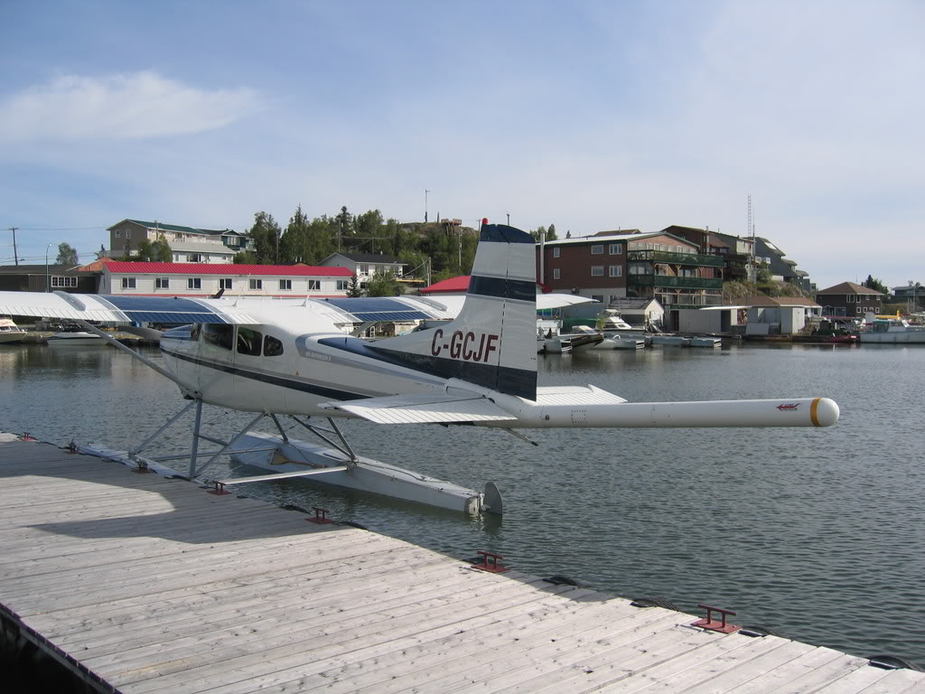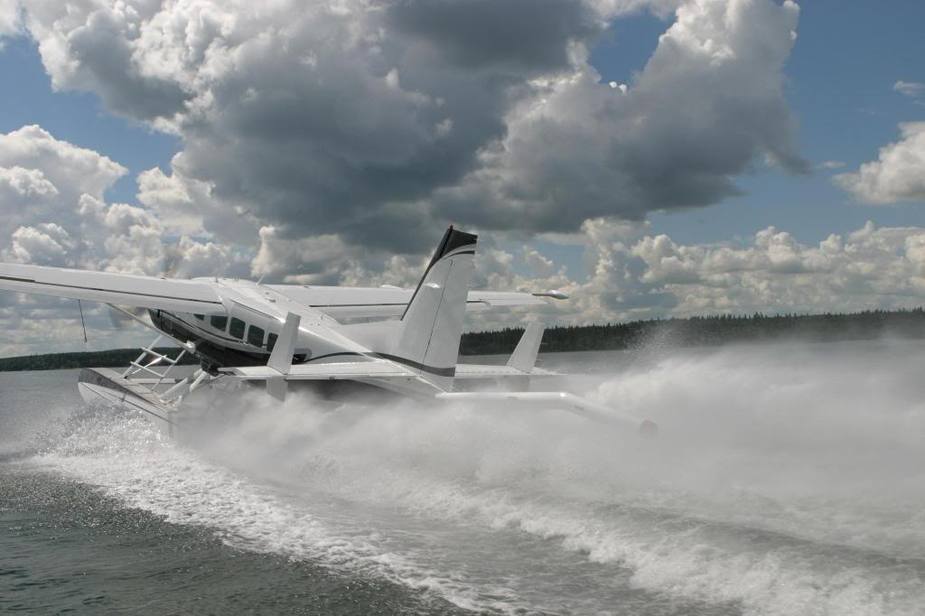Pretty impressive.
Good videos. They are a beginning point in that skill. When you have a 10 knot wind, things become much more complicated! It’s very smooth that the video demo pilot selected a C 206 with two front doors. The version (most common) with no front right door, are a misery to dock on the right side by yourself. There is a very expensive STC’d front right door available for that purpose. Happily, if there is anyone else on the dock, they usually know what you’re going through, and will help you by grabbing a strut.
Docking my (or most) flying boats is a bit more challenging, as you have a wing tip float to deal with. Sliding along side the dock does not work, so your dock arrival is usually to a fixed stop. Happily, paddling them is much more easy than a floatplane, so you just shut down short, and paddle in.
My charge of last summer was a completely rebuilt C182 amphibian, to which I had the new owner install an MT reversing propeller – the first ever on a piston powered Cessna. A world of difference in docking control!
I really like the fact that there are EuroGA regulars with such diverse skills. Water operations are rather rare in England, so to hear the snippets from people like Pilot DAR operating in Canada is interesting.
Why would anyone tie an airplane to a dock nose in?
Chuck, I have, when doing so left it straight into the prevailing wind. The wind blows it off the dock, and nothing rubs. This is particularly handy when you’re the only pilot who flies the plane on the brand new floats, and everyone will know who put the first dock rash into the side! I’m always looking for the way that the plane will sit most happily moored, and hopefully being blown off the dock. Being off the dock is particularly nice when some uncaring mariners pass by at speed, and the wake thrashes the moored plane.
My wife has gotten used to the wait, while I tie, assess, then maybe reposition and retie, before we leave the plane for our dinner out. Fortunately, the several on the water restaurants we like all have tables from which we can watch the plane.
Docking gets to be un nerving when you have to pull up behind an aircraft already tied to the dock. Failure to stop, is going the be very costly! I was test flying a 185 with a tailboom, in Yellowknife, NWT. I had tied it to the dock, and watched as a turbine Otter came up behind my charge. At the last moment, he realized that this 185 was unlike any other, and slammed it into reverse, to stop the extra 10 feet back which was needed. Since then, I have insisted that all tailbooms I test have the ends painted red.

Some of my testing centered on the risks of “dipping the boom”. Lots of fun with extreme attitudes on the water. I similarly had to test a Caravan amphibian. The owner arranged a waterski tow boat for close in photos, so the results were great!

Sure, I can understand those reasons for tying it that way.
However I can not remember having ever tied one that way in all the years I have been flying them ( Over sixty. )
Hey Chuck, it just might be that I’m less confident about scratching a new float. Many times I was demonstrating brand new floats, so everyone is watching for the first scratch, and they’ll know who put it there!
On the other hand, the beat up old 1963 C180 I used to fly, was a dream in the air and the water, but not in the mirror! The owner carefully taught me every rock in his minefield lake, so when I flew him in and out, I would not hit them. (I think he knew them so well, ’cause he had hit them!). Anyway, Departing one day, I hit one – hard… As I felt it rip along each compartment, I just imagined the Titanic. I knew that right then, I fly, or sink, I pinned the rudder to straighten out, as I applied full power. On the step, I knew I would make it out. I arrived back to the home airport, and had to wait to land, so that I could go right up the ramp, and dolly the plane out before it sank. I got it up and out, and held my breath, as I looked under the float….
I could not tell which of the many scratches was the one I’d just done! So I checked carefully, for any not so obvious damage. Finding none, I put it back in the water, and enjoyed the rest of the day flying.
But, it’s pretty rare that I’m flying a plane who’s owner does not mind scratches on the floats…..
But, it’s pretty rare that I’m flying a plane who’s owner does not mind scratches on the floats…..
…………………………………………………………………………………….
I also abhor marring floats.
To prevent marring the floats I use a very inexpensive method of protecting the floats.
I carry two 4.78 liter flat sided plastic jugs such as windshield washer fluid and household cleaners come in.
I fill the jugs 1/4 full of sand, when I need to protect the floats such as when tying up along side of log booms I fill the jugs with water.
The sand gives the weight to sink the jugs when I fill them with water and they sink down to what ever level I need at the time and I tie them to the float struts.
When I depart the log boom I pour the water out of them and put them back in the float compartment.
My floats have never been marred when the airplane was tied up along side of anything using that method.
P.M. me for the special STC I can sell you. 
I carry two 4.78 liter flat sided plastic jugs
Hmmm, ’could double as pee bottles! 
I do carry fenders., but I’m still okay with those black rubber nose bumpers, when the wind is in the right direction…
I have not found boat fenders that work for tying beside log booms because they are full of air and will not sink in the water to protect the floats…..jugs with sand and water will sink down deep enough in the water to keep the floats from rubbing on the logs.